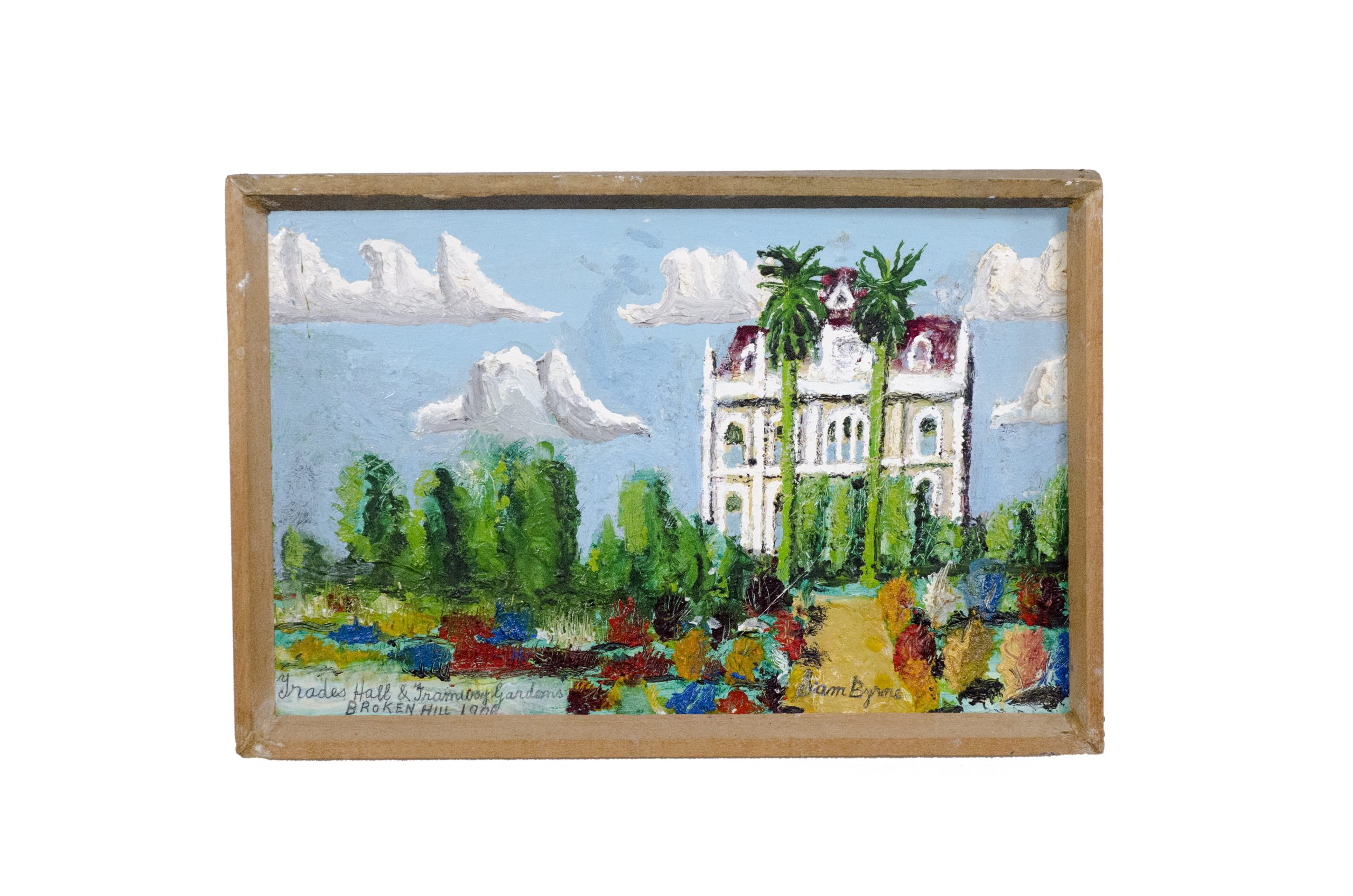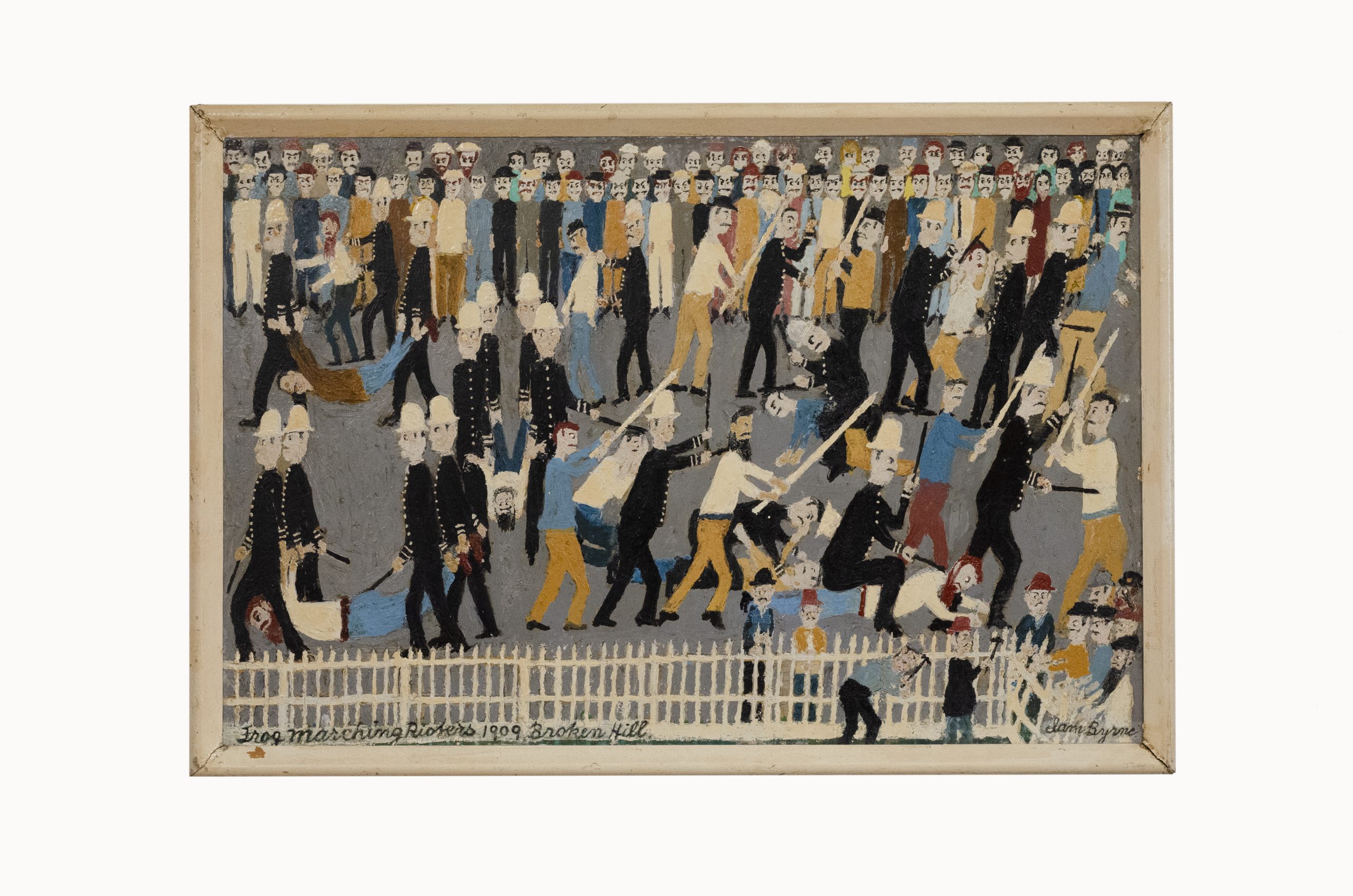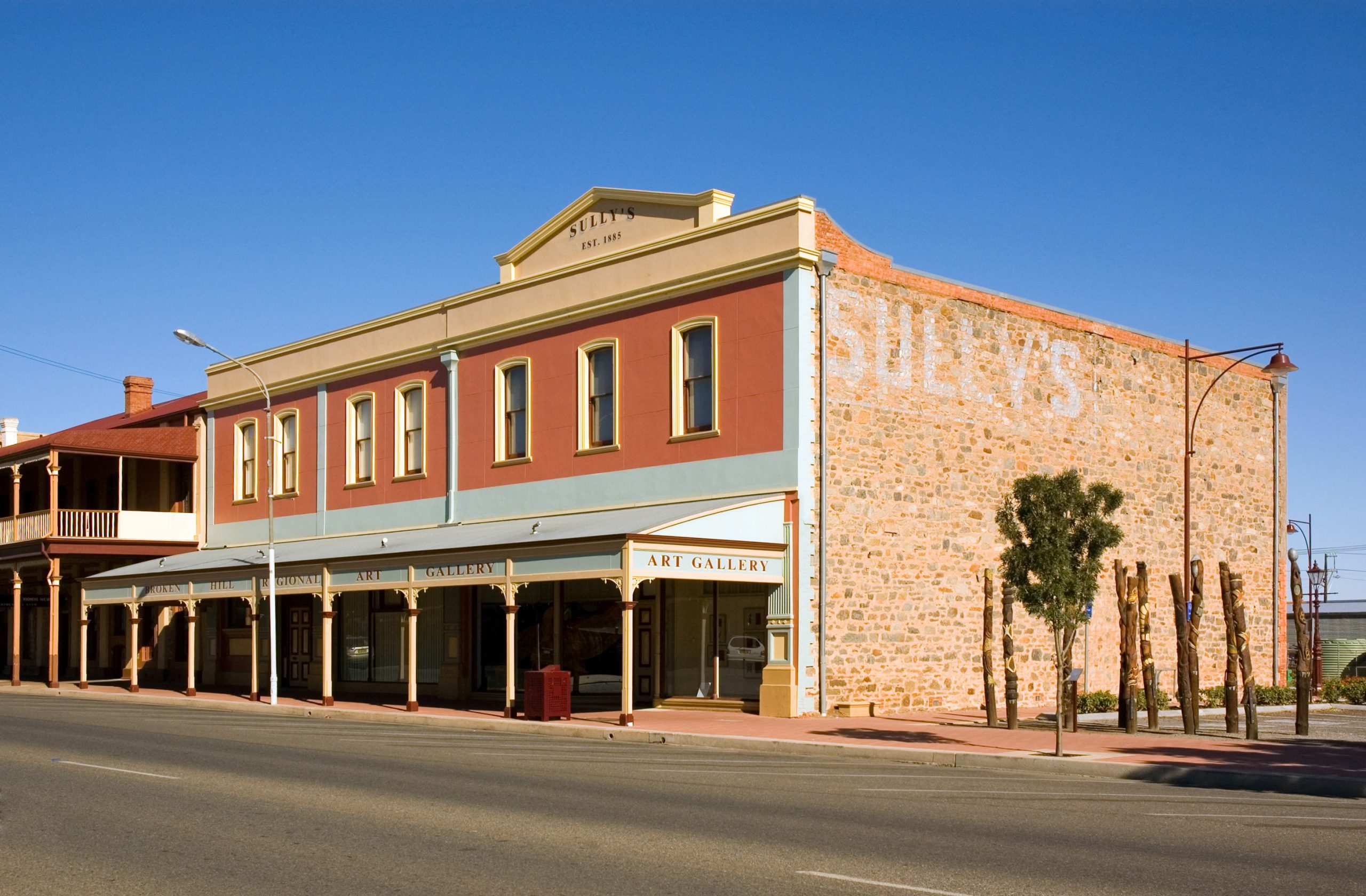The Silver City’s Folk Artist
Sam Byrne's Style
After retiring from mining Sam Byrne went on to become one of Australia’s most renowned folk artists. Born in 1883 in South Australia, Sam and his brothers were brought up in Broken Hill by his aunt, Emily Tapsell, following their parents’ death. A late bloomer, Sam worked for more than fifty years as a miner before picking up a paintbrush. Using Dulux house paint, he created colourful narrative scenes of Broken Hill’s social and industrial past.
When his elder brother died suddenly in 1897, Sam was forced to leave school and get a job on the mines to help his aunt financially. He was underage but managed to fool the mine officials by wearing his deceased brother’s shift badge. Sam married Florence Pope in 1910 and worked on the mines until his retirement in 1941.
In the early 1950s, after seeing an art exhibition at the Broken Hill Technical College that was not to his taste Sam decided he could do better and started to paint. His first competition entry was unsuccessful – his butcher’s paper and children’s paint were deemed inappropriate, but his talent was clear. The judge sent him to see a local art teacher May Harding, so that he could learn the basics.
May encouraged Sam to maintain his unique style; her only interventions were to recommend different materials. Her approach was ideal – Sam was single-minded when it came to what he liked in a painting. The two became firm friends, and May encouraged Sam to enter competitions.
Sam lived at Broken Hill during a formative time; he had witnessed the historic strikes and lock-outs, and the fluctuations in the fortunes of the burgeoning town. These events were the unlikely subject matter of his paintings. The embrace and inclusion of working class life made Sam’s work unusual in the realms of Australian art.
Sam’s unique painting style, glossy Dulux paint and idiosyncratic compositions were well received and led to him being offered shows in Sydney, Canberra and Adelaide. He continued to paint until his death in 1978. Sam’s work is held in National, State and private collections.






